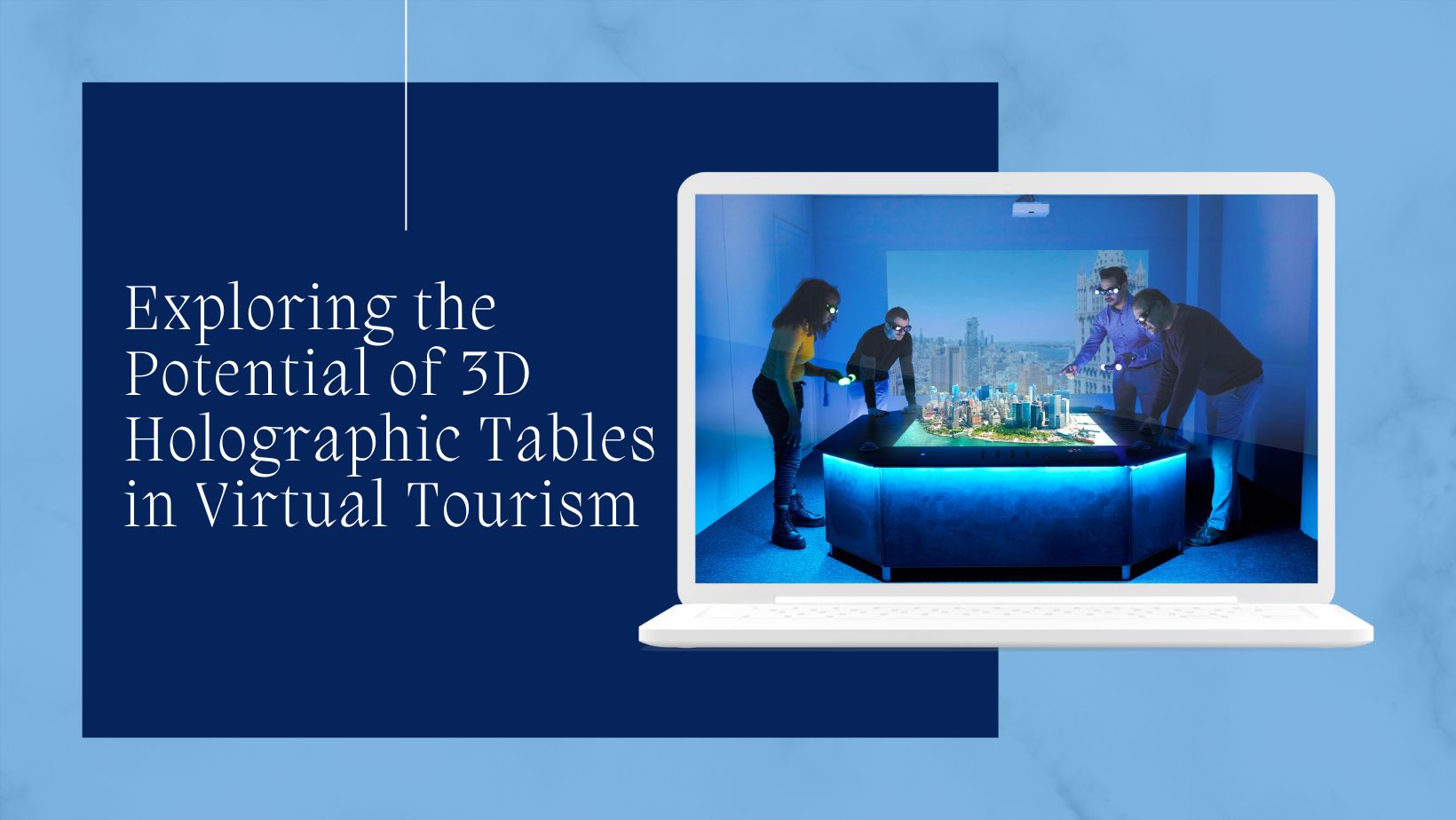In the digital age, technology continues to revolutionize the way we experience the world around us. One such innovation that holds tremendous promise in the realm of virtual tourism is the emergence of 3D hologram tables. These cutting-edge devices have the potential to transport users to destinations around the globe, offering immersive experiences that rival real-life travel. Let’s delve into the possibilities and implications of integrating 3D holographic tables in virtual tourism.


Unveil the future of virtual tourism with 3D holographic tables! Delve into the world of picture holograms and explore the immersive experiences offered by 3D hologram tables.
3D Holographic Tables In Virtual Tourism Overview
Before delving into their application in virtual tourism, it’s crucial to grasp the fundamentals of 3D holographic tables. These futuristic devices utilize picture holograms to create three-dimensional images that appear to float in mid-air above the surface of a table. By projecting light onto a transparent display, they can generate realistic, interactive holograms that users can manipulate and explore.
Enhancing Immersion in Virtual Tourism With 3D Tables
One of the primary advantages of 3D hologram tables in virtual tourism is their ability to enhance immersion. Traditional virtual tours often rely on flat screens or VR headsets, which can provide a sense of presence but lack the tactile interaction offered by holographic displays. With 3D holographic tables, users can physically interact with holograms, moving them around the table and examining them from different angles. This heightened level of interactivity creates a more immersive experience, allowing users to feel like they’re truly present in the virtual environment.
Bringing Destinations to Life With 3D Hologram Tables
Imagine being able to explore the bustling streets of Tokyo, wander through the ancient ruins of Machu Picchu, or dive into the vibrant coral reefs of the Great Barrier Reef—all from the comfort of your own home. With 3D holographic tables, these experiences can become a reality. By rendering detailed hologram pictures of real-world destinations, virtual tourism platforms can transport users to virtually any location on Earth. Whether it’s exploring landmarks, learning about local culture, or interacting with virtual tour guides, the possibilities are endless.
Facilitating Educational Experiences
In addition to providing entertainment, 3D hologram tables can also serve as powerful educational tools. Virtual tourism platforms can leverage these devices to create immersive learning experiences that engage students and deepen their understanding of geography, history, and culture. For example, a history class studying ancient Egypt could use a holographic table to virtually explore the pyramids of Giza, complete with interactive explanations of their construction and significance. By combining education with entertainment, holographic tables have the potential to revolutionize the way we learn about the world.
Overcoming Physical Limitations
One of the key benefits of virtual tourism is its ability to overcome physical limitations. For individuals with mobility issues or health concerns that prevent them from travelling, virtual tours offer a way to experience the world from afar. 3D holographic tables take this a step further by providing a more immersive and interactive experience than traditional virtual tours. Whether it’s exploring inaccessible locations or engaging in activities that would be difficult or impossible in real life, holographic tables offer a level of accessibility that can truly change lives.
Duties and Thoughts
While the potential of 3D holographic tables in virtual tourism is immense, there are also challenges and considerations to be mindful of. Technical limitations, such as the resolution and fidelity of holographic images, could impact the overall experience. Additionally, there may be concerns regarding the cost and accessibility of holographic table technology, particularly for individuals and organizations with limited resources. Furthermore, ensuring the accuracy and authenticity of virtual destinations will be crucial to provide meaningful and culturally respectful experiences for users.
The Future of Virtual Tourism
Despite these challenges, the future of picture holograms looks promising with the integration of 3D holographic tables. As technology continues to advance and become more accessible, we can expect to see increasingly sophisticated virtual tourism experiences that rival real-world travel in terms of immersion and engagement. From educational field trips to interactive cultural exchanges, holographic tables have the potential to redefine the way we explore and experience the world.
Conclusion
So, 3D hologram tables represent a revolutionary tool for virtual tourism, offering unparalleled immersion, interactivity, and accessibility. By leveraging this cutting-edge technology, virtual tourism platforms can transport users to destinations around the globe, providing educational, entertaining, and culturally enriching experiences. While there are challenges to overcome, the future of virtual tourism looks bright with the potential of holographic tables to reshape the way we engage with the world. As we continue to push the boundaries of innovation, the possibilities for virtual tourism are truly limitless. To know more about holographic displays, connect with the Vision3D customer service number – +91-8971953451.
